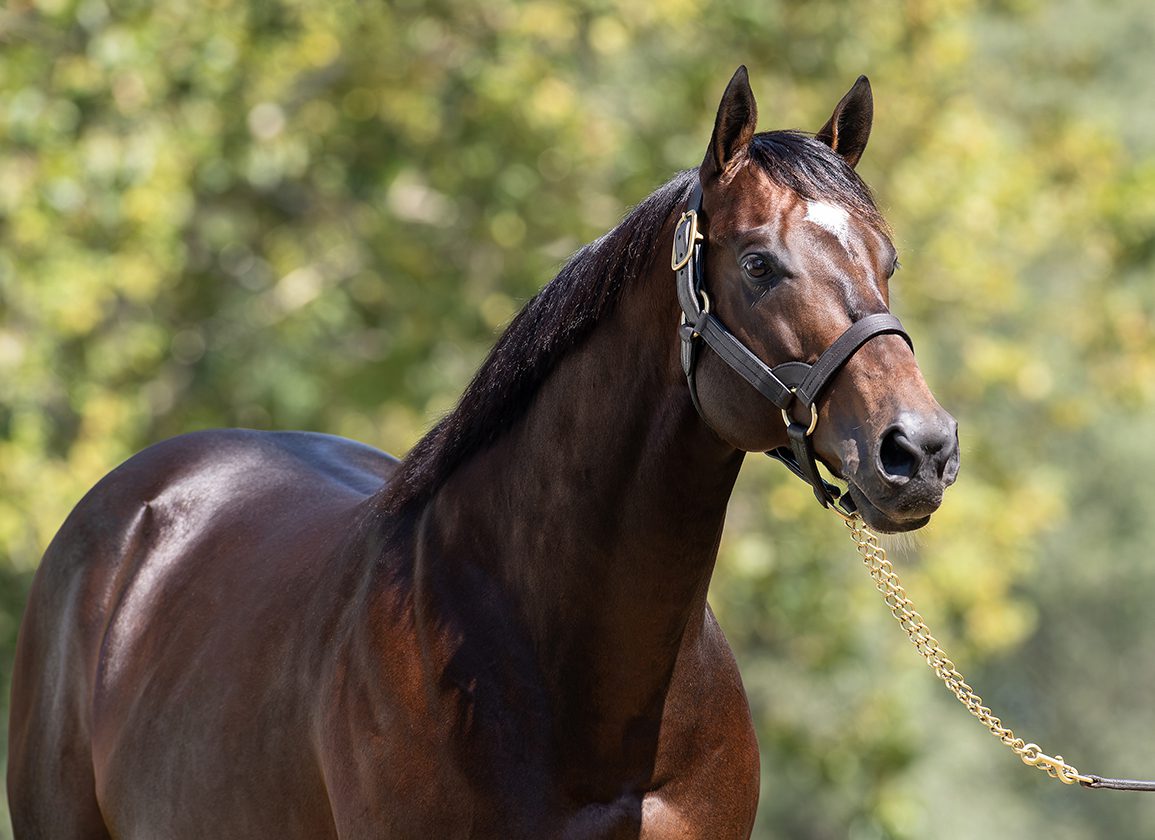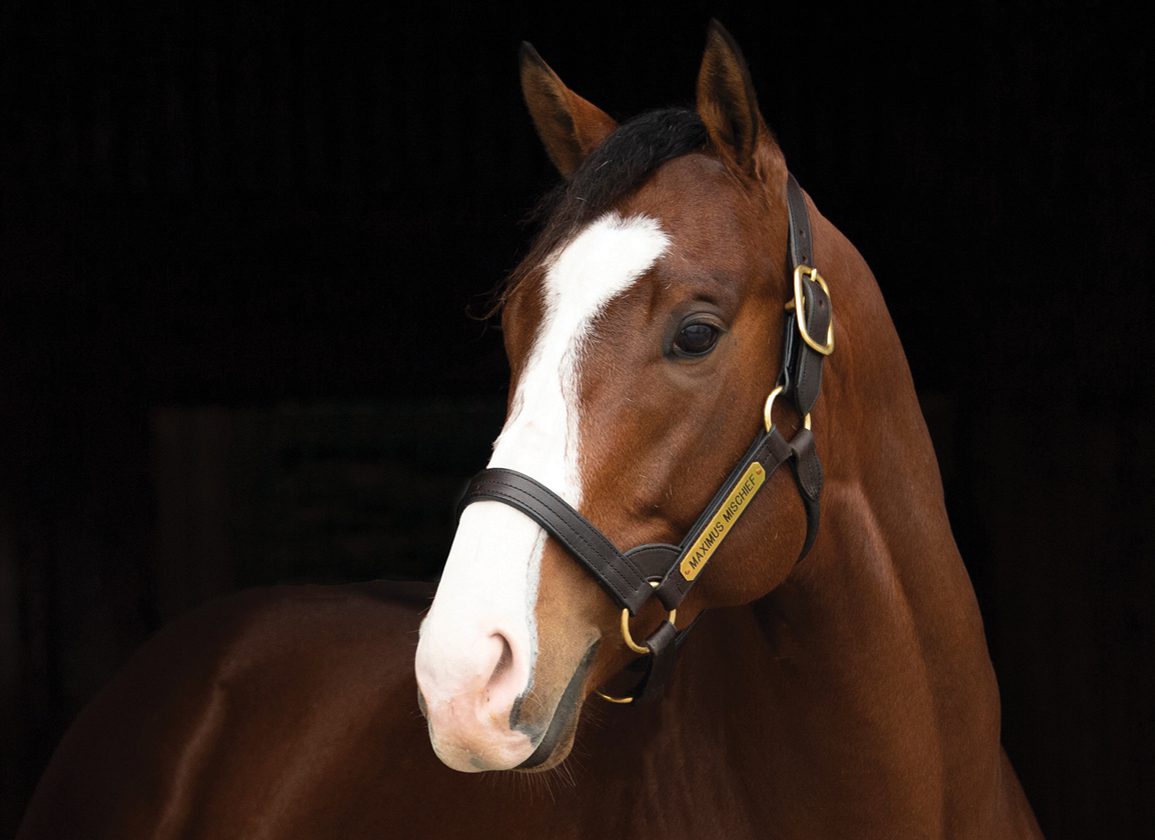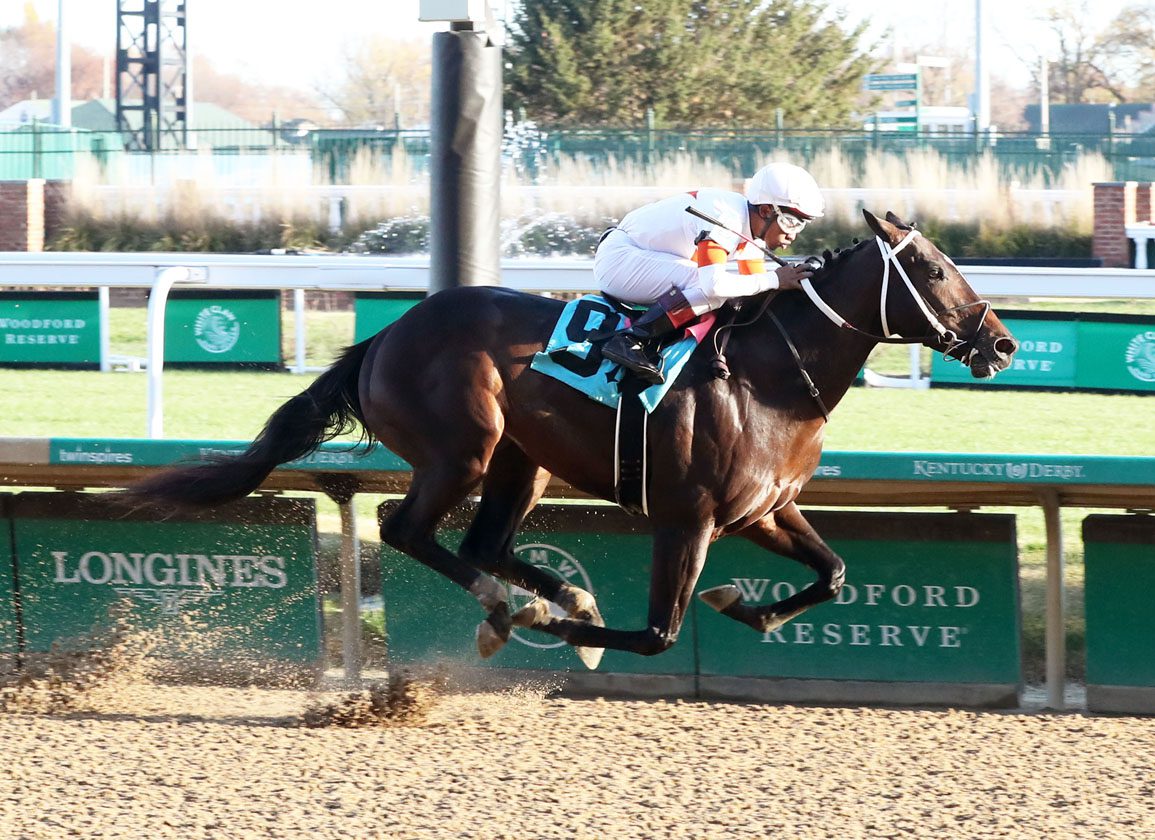By Chris McGrath
Everybody understands the deal with new stallions. Most will never again command so high a fee, nor so potent a book, and many will complete their principal service to commercial breeders long before any of their stock has actually entered a starting gate. Once they reach that point, you need only browse the freshman tables of years past to get a chastening sense of how many “exciting” newcomers will establish a lasting eligibility to keep seeding the breed.
On the other hand, their window of opportunity is ruthlessly brief. If they don't seize the moment, they quickly fall prey to the same vogue that so recently favored them, as breeders flit to the next intake. The stakes are correspondingly high, then, as we begin to grasp which among the current group are managing to walk the walk. And there's no doubt which farm will be perusing the table with most satisfaction.
Now it must be acknowledged that Spendthrift's recruitment in 2019 was so aggressive as to cause some resentful mutterings about “cornering the market.” That has proved mildly hysterical, but it's certainly legitimate to say that standing the first, second and joint-third most expensive new sires of 2020 represented a significant change of tempo for B. Wayne Hughes and his team, radically adapting their trademark of high-volume, low-fee sires. Having raised the stakes so steeply, then, those supervising the legacy of the farm's late owner are justly gratified to see four of Spendthrift's five new sires in 2020 now filling the top of the freshman earnings table–with all four, moreover, still having every chance of claiming the title.
That's because barely $200,000 divides narrow leader Mitole ($1,942,416) from Omaha Beach ($1,732,570) in fourth, with Vino Rosso ($1,852,771) and Maximus Mischief ($1,751,396) tucked in between. The top three, indeed, have all had a turn in front over the past couple of weeks, Mitole the latest after a particularly fertile weekend. However things play out, a statement has been made. Spendthrift has demonstrated that even more affluent breeders, with no need of the kind of incentive schemes that sustained the rise of Into Mischief, are prepared to exchange the risk of catalogue congestion for a relatively lenient fee.
That said, the first thing Ned Toffey wants to stress is the way Maximus Mischief–the most prolific sire of the intake, with 29 individual winners against 26 for Vino Rosso–has stood so tall for the established model.
“That's the great irony,” says the farm's general manager. “We made a conscious decision to try to step up the quality, we made three really strong purchases, and yet it's one in a lower-price category who's right in there among them for leading freshman. So I think he's shown that it's still important to remember that a good horse can come from anywhere–which is something we've always believed.”
So much so, that Hughes evidently required a fair bit of persuasion before embarking on such a marked step change.
“Yes, it took a little bit of discussion, and looking at things, and thinking about it himself, to really appreciate that there was a bit of a shift in the marketplace, and that it was important to step up the quality,” Toffey recalls. “But at the same time, he was always adamant that we should not get away from what had been our bread-and-butter. He felt strongly that we needed to make sure we also have options for the smaller breeders.
“And that was really reflected with Maximus Mischief: his career ran a little shorter, but as an undefeated 2-year-old by Into Mischief, there was certainly plenty there to hang your hat on, and make the case that this horse could be any kind. It was very much a template that had worked for us. At the same time, yes, we wanted to go after some of the bigger guns. And the nice thing is that it's paying off not with one or two, but four.”
They shared momentum even between their recruitment and arrival. With announcement of their fees deferred until the Breeders' Cup, Vino Rosso and Mitole put themselves lucratively in the shop window with wins in the Classic and Sprint, respectively. And while Omaha Beach was just given the slip in the Dirt Mile, he reiterated his class when signing off in the GI Malibu S. All three, then, had the kind of profile to support a more conventional trading model.
“What we began to find, over the years, is that there's a higher price point where the 'Share the Upside' model didn't appeal quite as much,” Toffey says. “So the so-called Big Three that we brought in, we just sold those seasons straight up. It's just the way things have evolved and, in a way, our approach has evolved alongside that. We were very fortunate, having bought those three before their racing careers were over, that they all finished up on the right note.”
That comes at a stipulated price, of course, in most contracts.
“But usually you'd rather pay the 'kicker' to achieve a little higher price point, which hopefully means a mares that are a little bit better as well,” Toffey reasons. “They all came to stud with momentum, and that's not easy to do. We've bought plenty of others whose careers didn't then go the way we hoped!”
But the great thing now is that they have also landed running in their next careers. Of course, no bones about it, the upgrade in quality was matched by the customary Spendthrift quantity. All three corralled over 200 mares, while Maximus Mischief fell just short at 196. In fairness, however, there are other farms that cover mares on an industrial scale–and there's never anything automatic about then getting prolific results on the track.
“I think so much of it is a credit to our breeders and to our salesmen, and to the relationships that they've built over the years,” Toffey says. “I've often been asked about what you do, when a horse comes to stud, to help make him work. And what I've learned in my time is that it's not a one-year project. It's not something you do on a given horse. It's something that your farm, your team, and your salesmen have to do, day in day out, year after year, in terms of building relationships.”
And he underlines that the same principle extends right through the pyramid, from the ownership to the booking secretaries to the guys in the breeding shed.
“So, not to sound cliched, but it's just very, very much a team thing,” he says. “There's just so many aspects to this and, if I was going to be proud of anything, I would say it's what Spendthrift does as a team to help these horses, and our breeders, to be successful.”
One way or another, the Spendthrift formula has proved adaptable. Other farms might well have sought more than $45,000 for a horse as well-bred as Omaha Beach, able to win Grade Is around both one and two turns; or $30,000 for a Breeders' Cup Classic winner; or $25,000 for a champion sprinter that also won a GI Met Mile. As with lesser horses, however, the Spendthrift accountants have banked on those milder fees generating higher volume, so matching the kind of yield that might be achieved elsewhere with more conservative books but tougher fees.
“I would never argue against quality, you want to have as good a book of mares as you can for your stallion,” Toffey says. “But we have seen, too, time and time again that these top stallions can come from any level of the market–and routinely do. So you've got to get numbers, got to give breeders a chance to be successful. And I think that's part of what our program has done.
“There's a lot of very good farms doing a lot of really good things, and it's the competition that's led to a lot of what we do. All you can do is get them mares, and hope that they can do it from there. And the other thing that I've always said is that our salesmen have a lot of different clients that they're used to dealing with. And the thing about being here in Kentucky, there are so many good breeders with different approaches. Rather than us trying to tell our breeders what to do, we try to listen to–and learn from–them. And you begin to see patterns emerge: what works, what doesn't. I think that's a huge value. But you only get that with numbers.”
In terms of their individual output, nobody could be surprised by the precocity of Maximus Mischief's stock, nor that Mitole should be siring horses fast enough for 2-year-old sprints. But few, even from as many as 150 named foals, would necessarily have expected a horse like Vino Rosso, who thrived with maturity, to muster more juvenile starters than both. Albeit no freshman has yet managed a Grade I winner, which is pretty rare nowadays, Vino Rosso has had no fewer than four placed at that level.
“Probably the most surprising thing to me is how early the Vinos have been,” Toffey acknowledges. “You saw a number of them in pinhookers' hands and thought, 'Well, how is this going to look, when they have to cruise down that stretch and go a quick eighth?' And I think the fact that they've handled that speaks a lot to the quality horse that he is. Of course, if you go back over the years, you see so many of these great Classic horses that could have been successful sprinting as well. But one of the things that excites me about his chances, going forward, is that they've shown that they can be quick and precocious, but now you're also starting to see them excel as races have gotten a little longer. So I'm cautiously optimistic that next year could be really strong for him.”
In contrast to Vino Rosso's 82 starters to date, Omaha Beach has launched 52–perhaps as much a reflection on the Classic caliber of his mares as anything else.
“Breeders love him,” Toffey says succinctly. “He's just throwing such quality, and he's already booked full for this year. There's so much pedigree there, so many generations of quality, you see it just in his looks. He has horses doing it the right way, in the right hands and at the right kind of tracks, really suggesting to owners and trainers that they're going to reckoned with in major races going down the road.”
Sure enough, Omaha Beach is matching Vino Rosso on a class-high nine stakes horses, each also with four placed in graded stakes. Neither, however, has yet managed a graded stakes scorer–unlike Mitole, with GII Pocahontas S. winner V V's Dream.
As we've mentioned, Mitole is on a roll right now. He took over at the top with three new winners on Sunday, including 'TDN Rising Star' Carbone at Churchill Downs, besides coming up with a fifth black-type performer when Typhoon Fury was stakes-placed at Aqueduct just 10 days after breaking his maiden.
“It's actually Mitole whose winners have the longest average winning distance,” Toffey says. “Which is totally counterintuitive, but that's the horse business, I guess. But you're seeing a lot of Mitoles that look like him–and he's an incredibly smooth horse from head to tail, so well put together. But I'm also seeing a good number of his offspring with that little added leg. You're seeing some that look like they're going to stretch out and be quality horses, so I think his future looks really, really solid as well.”
And, come to that, Toffey feels that there could also be latent reserves in Maximus Mischief.
“He's a really big stallion,” he says. “He looks a lot like into Mischief, but with some added leg. So I think that's exciting. Seth Semkin that works for us made a really interesting observation after the breeze show at the Fasig-Tipton Maryland sale. It was a very tiring track that those horses were working on, and he remarked how the Maximus Mischiefs were persevering all the way through their work, and through the gallop out, where a lot of horses were just giving up. These horses just wanted to keep trying, keep working. I think that's something you see with Into Mischief and now you're seeing it with him, too, that they're tenacious. They like to go out and do their job. So with him throwing that bigger, leggier type, I look for them to be good as we go a little farther. I think they'll hold up really well round two turns.”
Toffey adds a word also for Coal Front, the fifth recruit in this intake. “That was another where we wanted to make sure we had something to offer, on the lower end, to smaller breeders,” he says. “We struggled getting the numbers to him, but if he had the support that some of these other horses had, I think he'd be much higher up the list as well. He's certainly shown the ability to get a nice horse.”
To be fair, that could also be said of many others struggling to keep up with the Spendthrift frontrunners. One of the other farms that isn't averse to big books is Darby Dan, but a debut book as large as 183 doesn't diminish the credit due to Flameaway in banking over $1.5 million with 16 winners to date. It's getting harder for him to break up the Spendthrift monopoly, now lying over $200,000 behind Omaha Beach, but he stands alone as the only freshman with a third stakes winner. (All four of the Spendthrift sires above him have two apiece, along with Audible at WinStar.) Moreover, the son of Scat Daddy is the only one besides Mitole to have produced a graded stakes winner, in dual Grade III scorer Dreamfyre.
His studmate Copper Bullet did not have the same volume but six winners from just 18 starters to date include a brisk one in Copper Tax, who completed a five-timer with a second black type win at Laurel last weekend. And Divisidero, who certainly warrants more opportunity at Airdrie as a potential heir to Kitten's Joy, demands a second look after his first winner (from a handful of starters) followed up in a Kentucky Downs stakes before running third in Grade II company at Keeneland.
It should be far early to judge how this group, overall, might fare in the longer term. With only a few weeks to go, however, a strong finish is required to meet the collective standards set by recent freshman classes. Nowadays, new sires are so lavishly supported that it is uncommon for any intake to blank outright on Grade Is, the way this one has. To date, in fact, they have just two graded stakes winners between them: an exceptionally meek return. The four preceding classes respectively collectively yielded 15, 13, 13 and 12. We then slump to four from the freshmen of 2018, of whom only the top three in the table (Cross Traffic, Goldencents and Cairo Prince) plus Mucho Macho Man are still in business in Kentucky.
So the pressure is on this lot, collectively. But the top four have already banked more than did Not This Time when third in 2020, while Flameaway will imminently do so. If any can prove half as successful as he has become, in the meantime, then all concerned will be happy. And, in fairness, there are still a few juvenile graded stakes to come. Regardless, for the second year running it looks as though the freshman title race will be going to the wire. In 2022, there were three different studs nervously counting every cent–and it was actually Spendthrift that prevailed with Bolt d'Oro. This time round, barring some cataclysmic intervention by Flameaway, the same farm finds itself pretty much in a win-win-win-win situation.
Not a subscriber? Click here to sign up for the daily PDF or alerts.









